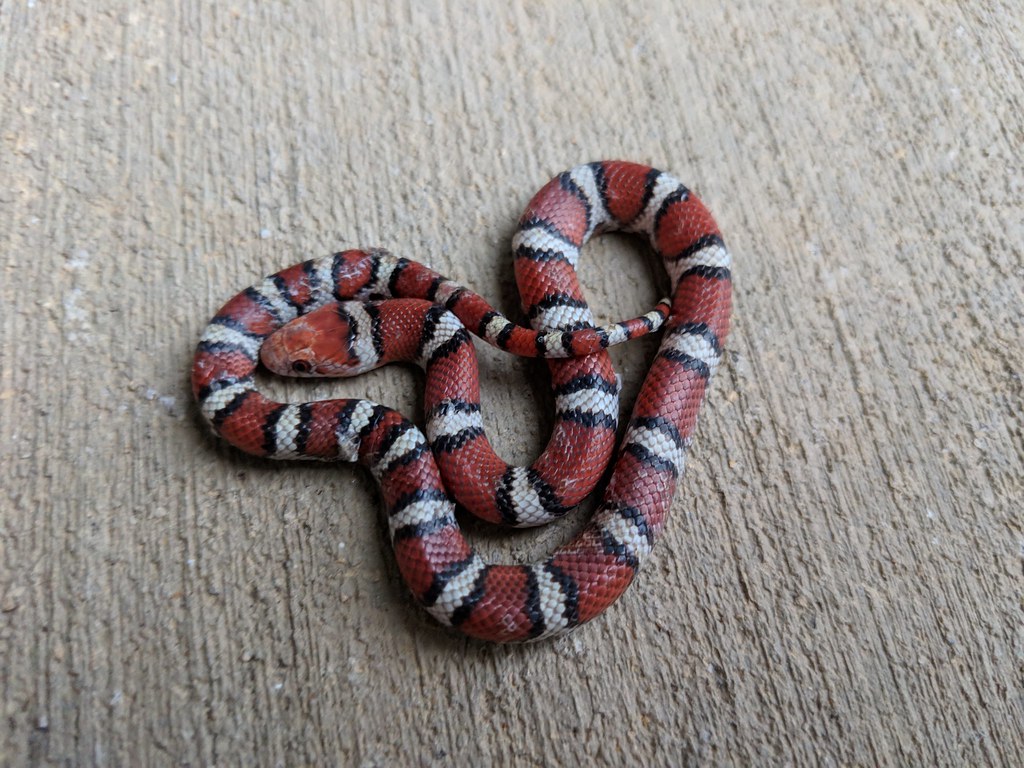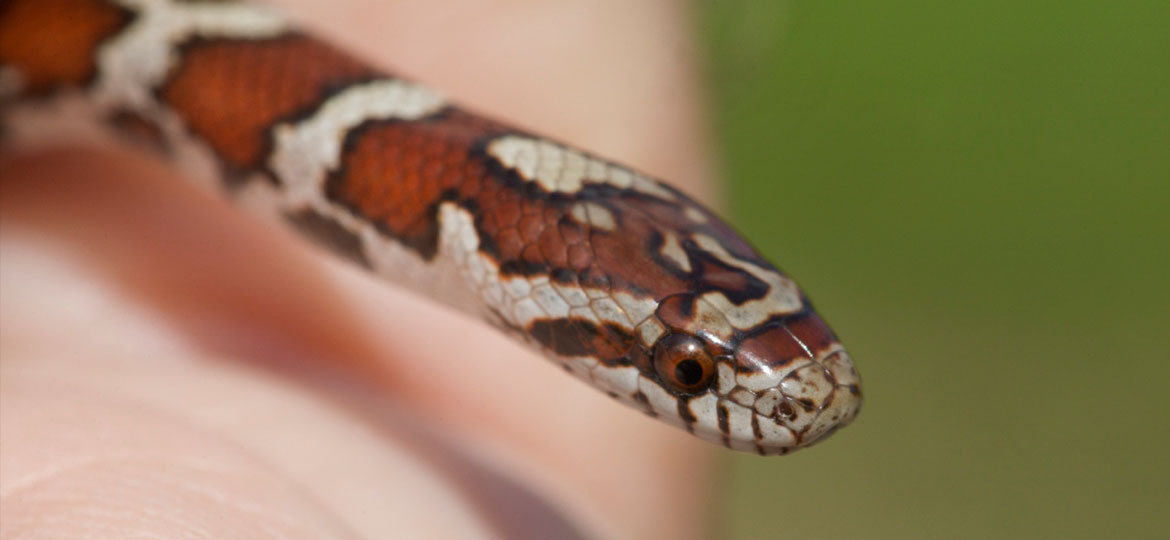Milk snakes are a popular pet choice, especially for reptile novices. These snakes are nonvenomous, do not grow toolarge, and often tolerate handling well. There are some 24 different types of milk snake, though. Each of these subspecies has unique qualities.
Ghost Honduran Milk Snake (#9208-M), Het for extreme hypo, Gorgeous male, He is approximately 15” in length and eating great on live pinkie mice $300 plus shipping, no trades (PHOTOS OF THE ACTUAL SNAKE YOU ARE PURCHASING) Please check our web page for: Guarantee Policies Shipping Rates Call (281) 590-0426 for more information. Description: Medium-sized (up to 110 cm TL) snake with variable color pattern. The less brightly colored L.
The most common milk snakes taken as pets are the Sinaloan, Black, Eastern, Honduran, Pale, Red, Pueblan or Nelson’s subspecies. These snakes are all keen feeders, accept handling relatively well and are wholly docile. However, they are nervous snakes and can musk.
If you are new to snake husbandry, a milk snake can be a great introduction. Like all snakes though, milk snakes require special care. Ensure you can commit the time and attention required to their needs.
What Is a Milk Snake?
Wild milk snakes (Lampropeltis triangulum) are found throughout the United States. They are also frequently bred in captivity to be kept as pets. Milk snakes are popular due to a passive nature and striking appearance.
The Eastern Milksnake’s favorite preys are small rodents, and mice make up the largest portion of this group. Other snakes, including venomous species, are also taken, and lizards and an occasional bird supplement the diet. The Copperhead is often mistaken as the Eastern Milksnake. The head of the Copperhead is a coppery color without any marks. The Eastern Milk Snake suffers from one of the myths about snakes, that it milks cows. That belief/story plainly is not true. Also, people sometimes kill Eastern Milk Snakes because of their resemblance to the Northern Copperhead Snake. Actually, the Eastern Milk Snake is a beneficial animal, especially on farms.
Milk snakes are nonvenomous and have tiny teeth, making their bite almost imperceptible to a human. Despite this, a milk snake can spark panic in the wild. This is because some milk snakes resemble coral snakes. Wordpress content management system.
Do Milk Snakes Make Good Pets?
Milk snakes of all shapes and sizes are very popular pets. Breeders often combine different sub-species of milk snake to create interesting new patterns and aesthetics. Remember though, there are 24 different sub-species of milk snake. Each of these has different needs.
All milk snakes are nocturnal and should be fed a diet of frozen rodents. Different subspecies have differing appetites. Most pet milk snakes are bred in captivity. All the same, these snakes can be skittish. They rarely bite, but may musk in self-defense.
Once a milk snake has adapted to its surroundings, it will become curious. This important to note, as these snakes can be escape artists. Ensure that your enclosure is secure without sacrificing comfort or ventilation. Provide stimulation in the form of rocks and burrowing substrate.
Milk snakes are antisocial. Never attempt to keep two milk snakes in the same enclosure. The snakes will attack each other, and one is likely to be eaten. Breeding is the obvious exception to this rule.

If you are new to keeping snakes as pets, some milk snakes are best avoided. The Central Plains milk snake or Louisiana milk snakes are suitable for experienced snake handlers only. These breeds are fussy eaters, and thus become prone to illness.
The New Mexico milk snake is timid and will provide little entertainment. Other subspecies, such as Stuart’s milk snake and Conant’s milk snake, are rare and expensive.
These snakes are typically suitable for any home, with the appropriate attention. A healthy, well cared for milk snake can live up to 20 years.
Black Milk Snake (Lampropeltis Triangulum Gaigeae)
If you are looking for an easier snake to care for, consider a Black milk snake. They don’t mind human interaction and being handled. Black milk snakes are also hardy, rarely becoming sick, and will always eat heartily.
Black milk snakes have different temperature needs to other subspecies. This snake prefers to live in a slightly cooler climate. Black milk snakes are happiest with an ambient temperature of 75 degrees. If your snake is housed in a cold room (below 70 degrees), provide a basking lamp.
Temperature is important to Black milk snakes due to a healthy appetite. Black milk snakes can grow large and willnever decline food. An adult Black milk snake can happily eat a medium-sized rat per week.
The warmer the snake is, the faster is metabolizes meals. In a temperature above 80 degrees, a Black milk snake will grow overweight.
Young Black milk snakes come in a range of colors. Black will feature, but usually only on bands. Many hatchling Black milk snakes are bright red, orange or yellow.
As the snake ages, it will grow darker. Many adult Black milk snakes live up to their moniker, the scales turning deep black.
Eastern Milk Snake (Lampropeltis Triangulum)
Eastern milk snakes are commonly located in the wild in the United States. They are most populous in Virginia.
This subspecies is a popular pet as it is among the most docile of all milk snakes. It will tolerate handling well. In addition, this snake can thrive in slightly cooler ambient temperatures.
The Eastern milk snake is not the most striking of subspecies. The color markings tend to be rusty, or even dull. Itremains beautiful to look upon, though.
This snake is also an unfussy eater. It will usually eat one mouse a week. This adds to the Eastern milk snake’s reputation as a low-maintenance reptile.
Honduran Milk Snake (Lampropeltis Triangulum Hondurensis)
Honduran milk snakes are the gentle giants of this genus. Although these snakes grow to 48 inches, they are shy. These snakes enjoy a smaller enclosure with plenty of substrate.
This snake will be nervous initially, but it will quickly adapt to captivity. Honduran milk snakes rarely bite or musk when handled. They also only need to be fed once a week. A frozen mouse each time is ideal.
This docile temperament and lack of a low maintenance lifestyle make Honduran milk snakes popular with pet owners. If you have the capacity, they make great first snakes.
Nelson’s Milk Snake (Lampropeltis Triangulum Nelsoni)
Nelson’s milk snakes are one of several reptiles named after Edward William Nelson, a 19th Centuryherpetologist. These snakes are native to Mexico and grow to around 42 inches in length.
Nelson’s milk snakes respond positively to handling. They are strong and muscular, but retain a thin and slender appearance. Typically, a Nelson’s milk snake will have a red body and black snout. There are multiple albino morphs of this subspecies, though. These are popular with collectors.
The Nelson milk snake can be a fun and amusing companion. It does require a warmer enclosure than some snakes, though. This reptile will always need access to a temperature of at least 80 degrees, ideally 85.
This subspecies is also a master escapologist. Always ensure that your Nelson’s milk snake is secured in itsenclosure. Providing plenty of opportunities to burrow will keep the snake content.
Pale Milk Snake (Lampropeltis TriangulumMultistriata)
Pale milk snakes have a white or cream coloring. They are also quite small. Most Pale milk snakes do not exceed 24 inches in length. It should also be noted that these snakes are quite timid.

These characteristics mean that this snake does not appeal to all enthusiasts. Some consider the Pale milk snake to be insipid, both in appearance and persona. It can be undeniably striking to gaze upon a Pale milk snake, though.
If you do bring this snake into your home, be patient. Your snake will adapt to life in captivity and being handled. Mac white liner fascinating. This may take time, though. The Pale milk snake is likely to must and nip at first. Thankfully, appetite will not be affected. This snake will happily eat one mouse a week.
Pueblan Milk Snake (Lampropeltis Triangulum Campbelli)
The Pueblan milk snake is a firm favorite of breeders everywhere. It’s not difficult to understand why. This snake has bright markings, eats readily and easily, and rarely grows too big. Most Pueblans peak at a little over 30 inches in length.
Pueblan milk snakes have slightly more complicated needs. A contrast of temperatures is essential. Provide this snake with a basking lamp at a temperature of 85 degrees or above. It also needs a cooler part of its enclosure to retreat to.
Milksnake Psd
This subspecies is also a keen burrower. Consider this when choosing a substrate. Pueblan milk snakes are also likelier to spend more time in the water. Provide a heavy and deep bowl.
The Pueblan milk snake can also be nervouswhile adapting to a new home. Do not handle this snake to excess while itadapts. Feed it once a week with frozen mice.
Watch the snake carefully while it digests. If it spends too much time basking after food, it will grow overweight. There is a fine line between hunger and greed. The Pueblan milk snake can often fall onto the latter side of this divide.
Red Milk Snake (Lampropeltis Triangulum Syspila)
If you adopt a young Red milk snake, twothings will become immediately apparent. This snake is shy and skittish,initially rejecting handling. In addition, it has a hearty appetite.
The good news is, you can turn the latterto your advantage. It’s true that Red milk snakes are shy. You will rarely findone in the open in the wild. This means the snake will be troublesome at first.It will musk when handled, wriggle to avoid you, and may even bite.
Gain the trust of your Red milk snake byfeeding it. This subspecies is not the largest, rarely exceeding 35 inches inlength. Despite this, even young Red milk snakes devour full mice.
Eventually, with time and patience, thissubspecies will calm down and accept handling. The snake’s temperament meansthat it may not be ideal for children or first-timers. Experienced and calmhandlers will find plenty of pleasure from a Red milk snake, though.
Sinaloan Milk Snake (Lampropeltis Triangulum Sinaloae)
Sinaloan milk snake is native to Mexico. They are among the most commonly bred milk snakes in captivity due to their bright and beautiful markings. Sinaloans are among the most human-friendly milk snakes. These snakes quickly adjust to handling and rarely react.
Sinaloan milk snakes are usuallycomparatively large. They can grow to 48 inches in length. This is a sedentarybreed, though. The enclosure for a Sinaloan milk snake need not be larger than20 gallons. Provide diggable substrate, as this subspecies enjoys burrowing.
These snakes have a healthy appetite. Even hatchlings will quickly seek food. You will need to start offering small mice within a few days. Larger adults can even eat rats. Sinaloan milk snakes should be fed once or twice a week, depending on hunger levels and weight.
Sinaloan milk snakes are among the easiest subspecies to care for. They are docile and, to be blunt, quite lazy. One exception to this rule comes with enclosure cleaning. This snake can be messy and will frequently smear feces on its enclosure.
Milk Snake Images
Milk Snakes Info
Study up on which milk snake makes the ideal pet for you. Things to consider include size, personality, and appetite. It is likely that you’ll find a milk snake that meets your requirements. Once you do so, enjoy a long relationship with your new companion.
Milk Snake Pictures

Comments are closed.